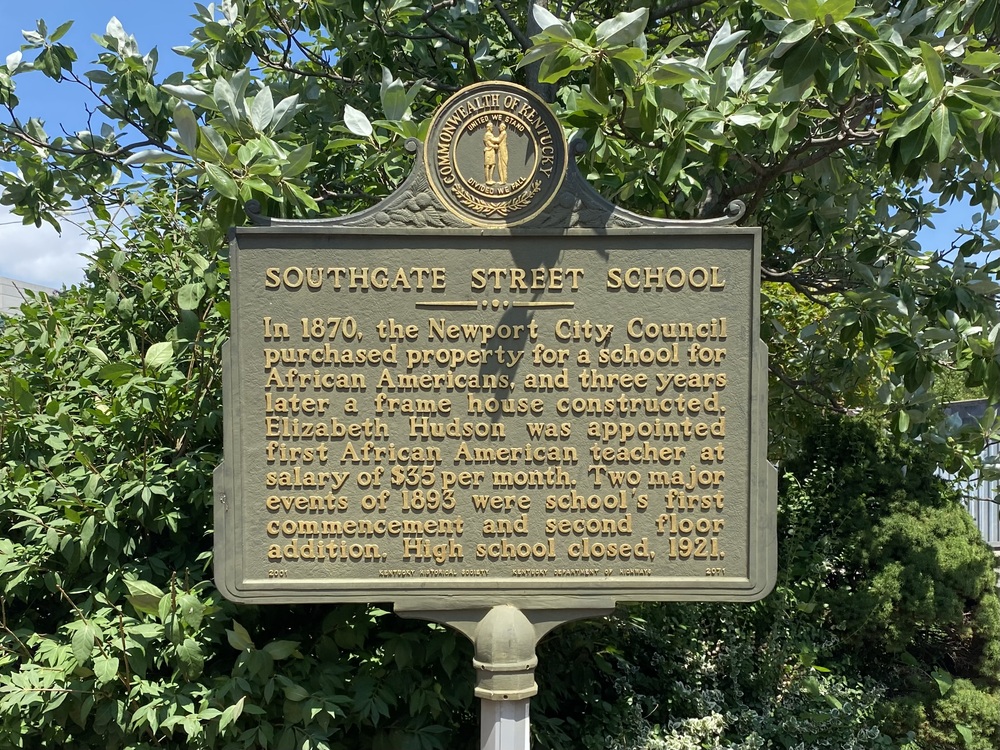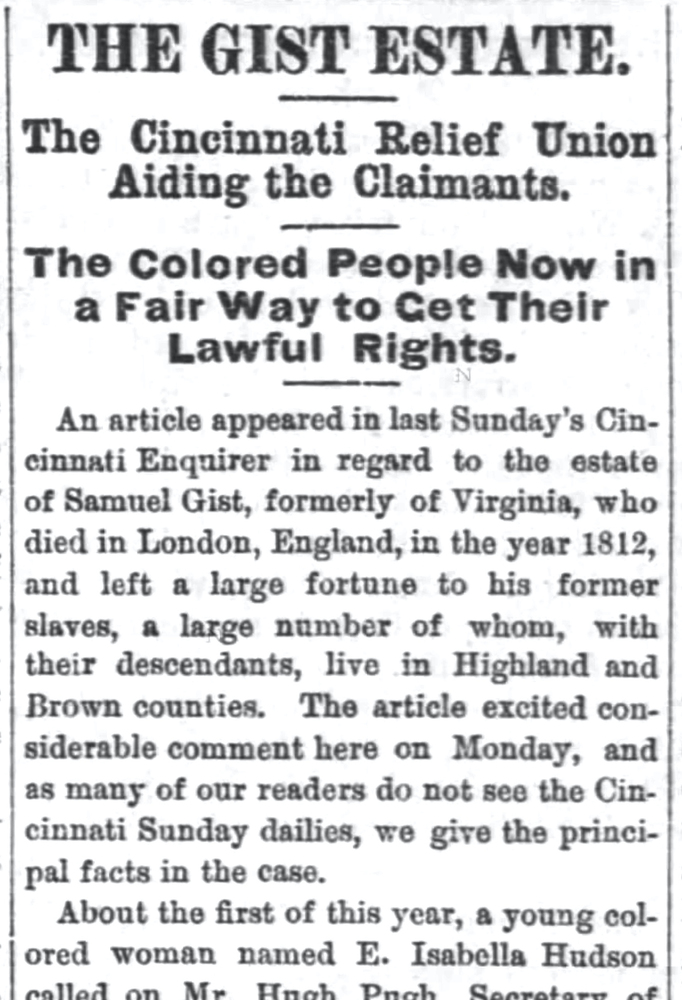Elizabeth Isabella Hudson
First teacher in the Newport “colored school”

In 1871, Elizabeth Hudson became the first teacher at a new school for African American children in Newport, Kentucky. After some success, she collided with legal structures and acquired a reputation for being “noisy and hard to control.” Things did not end well for her.
The Newport “colored school,” later called the Southgate Street School, met in a small, frame building at 215 E. Southgate Street. This building was later replaced by a brick schoolhouse that still exists, with a historic marker naming Elizabeth Hudson as the first teacher.
In 1874, the Cincinnati Daily Gazette reported that Elizabeth Hudson had forty children in her charge. “Eight of them are well advanced in practical arithmetic,” the newspaper reported, “and there are other indications of the usefulness of that institution.”
At some point, Hudson realized that legally, she was one of many heirs to the estate of Samuel Gist, a fabulously wealthy plantation-owner who had died in 1815.
Samuel Gist had lived in England. He had owned plantations in Virginia where hundreds of persons were held in bondage. When Gist died, his will said that these persons should be emancipated and should be given land. Gist also instructed that the cash value of his estate – worth millions, even in 19th-century dollars – should be distributed to these former slaves.
Land in Ohio was purchased for two “Gist colonies”– one in Highland County and another in Brown County. Many of the Gist’s former slaves moved to these places. The land in the Gist Colonies was poor, however, and the money never arrived.
Elizabeth Hudson was descended from one the Gist slaves. In 1877, Hudson traveled to Canada to meet with an attorney familiar with the estate. She returned to Cincinnati bearing a bundle of papers. She enlisted the help of the Cincinnati Relief Union. They contacted an agent in England to help press their case for a reconsideration of the estate settlement.
If the intentions expressed in Samuel Gist’s will had been scrupulously observed, Elizabeth Hudson would have been a wealthy woman. But it didn’t work out that way. Samuel Gist had died half a century earlier. The estate settlement had clearly been unjust. But whatever had happened to all the money wasn’t going to un-happen. By April 1879, Hudson’s legal crusade had collapsed.
After that time, Elizabeth Hudson’s story becomes more clouded. Around 1880, for reasons that are not clear, she was dismissed from her job as a teacher.
In subsequent years, Hudson moved frequently from one apartment to another. She would fail to pay rent for several months, until receiving an eviction notice. She would take the notice and use it to appeal for financial assistance from well-meaning people. Then she would move to a different address.
This pattern began to look fishy. Hudson would, for example, sometimes tell potential donors that she was about to be thrown out into the street along with her children, though she had never married and didn’t actually have any children. Articles in the Cincinnati Enquirer in 1891 and 1892 accused Hudson of being on outright fraudster and warned potential donors against giving her any money.
In January 1900, the Cincinnati Commercial Tribune reported that “Elizabeth Hudson, a colored woman of 45, and a school teacher” had developed “delusions of fear.” The newspaper stated that she “sees and hears strange things, and is noisy and hard to control.”
Hudson was committed to the Longview Lunatic Asylum in Roselawn. She is recorded there as an inmate in the census of 1900 and again in 1910. She died there in 1914.
Elizabeth Isabella Hudson was buried in a cemetery behind Longview. The hospital building was later torn down. The cemetery (west of the Glen Meadow apartments) is enclosed in a tall fence with a locked gate. Inside, reportedly, the grave plots have small concrete markers with numbers, but no names.
Elizabeth Hudson’s monument is not a gravestone, but the historic marker, which includes her name, outside Newport’s Southgate Street Schoolhouse.
Images

